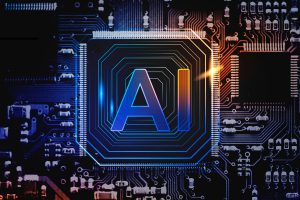How AI Can Help or Hurt the Fight Against Climate Change
Hi, I’m Fred Wilson, a freelance writer and a passionate advocate for environmental issues. I have a master’s degree in environmental science and a certificate in artificial intelligence. I have been writing articles and blogs on various topics related to the environment and AI for over five years. I enjoy exploring the latest trends and developments in these fields, and sharing my insights and opinions with my readers. In this article, I will discuss how AI can help or hurt the fight against climate change, and what we can do to balance the benefits and challenges of using AI for environmental issues.
Climate change is one of the most pressing challenges facing humanity and the planet. According to the Intergovernmental Panel on Climate Change (IPCC), the global average temperature has risen by about 1.1°C since the pre-industrial era, and is projected to increase by 1.5°C to 4.5°C by the end of the century, depending on the emission scenarios. This warming has already caused significant impacts on the natural and human systems, such as melting glaciers, rising sea levels, extreme weather events, biodiversity loss, food insecurity, water scarcity, health risks, and displacement of populations.
To address this challenge, we need to take urgent and coordinated actions to reduce greenhouse gas emissions and adapt to the changing conditions. However, this is not an easy task, as it involves complex and interrelated factors, such as technology, economy, society, politics, and ethics. How can we find the best solutions to tackle this global problem?

One possible answer is artificial intelligence (AI). AI is the branch of computer science that aims to create machines or systems that can perform tasks that normally require human intelligence, such as learning, reasoning, problem-solving, decision making, and creativity. AI has been advancing rapidly in recent years, thanks to the availability of large amounts of data, powerful computing resources, and innovative algorithms. AI has also been applied to various domains and industries, such as health care, education, finance, entertainment, and transportation, transforming the way we live, work, and communicate.
But what about the environment? Can AI help us fight against climate change? The answer is yes, but also no. AI can be a powerful tool to help us address environmental issues, but it can also have negative impacts on the planet. In this article, we will explore how AI can help or hurt the fight against climate change, and what we can do to balance the benefits and challenges of using AI for environmental issues.
Benefits of AI for Environmental Issues
AI can help us address environmental issues by improving energy efficiency, enhancing data collection and analysis, supporting decision making and policy making, and promoting innovation and entrepreneurship.
Improving energy efficiency and reducing greenhouse gas emissions
One of the main causes of climate change is the burning of fossil fuels, such as coal, oil, and gas, which release carbon dioxide (CO2) and other greenhouse gases into the atmosphere. To reduce emissions, we need to shift to renewable energy sources, such as solar, wind, hydro, and biomass, which are cleaner and more sustainable. However, renewable energy is not always available or reliable, as it depends on the weather and the time of the day. How can we ensure that we have enough energy to meet the demand, while minimizing the waste and the cost?
AI can help us optimize the deployment and integration of renewable energy, by using data and algorithms to predict the supply and demand, and to control the generation, transmission, distribution, and storage of electricity. For example, Google has used AI to reduce the energy consumption of its data centers by 40%, by using deep neural networks to adjust the cooling systems and the power usage. Another example is DeepMind, a subsidiary of Google, which has used AI to increase the power output of wind farms by 20%, by using machine learning to forecast the wind speed and direction, and to adjust the turbine settings accordingly.
AI can also help us improve the efficiency and reduce the emissions of other sectors, such as transportation and buildings, which account for a large share of the global energy use and greenhouse gas emissions. For example, AI can help us design and operate more fuel-efficient vehicles, such as electric cars, autonomous vehicles, and smart trains, by using data and algorithms to optimize the routes, the speed, the traffic, and the charging. Another example is AI can help us design and manage more energy-efficient buildings, such as smart homes, offices, and factories, by using data and algorithms to optimize the lighting, heating, cooling, ventilation, and appliances.

Enhancing data collection and analysis
One of the main challenges of addressing environmental issues is the lack of data and information. We need to monitor and measure the environmental indicators, such as CO2 concentration, glacier mass, sea level rise, biodiversity loss, water quality, air pollution, and wildfires, to understand the current state and the future trends of the environment. However, collecting and analyzing such data is not easy, as it requires a lot of resources, time, and expertise. How can we obtain and process more and better data, while reducing the cost and the complexity?
AI can help us enhance the data collection and analysis, by using satellite imagery, sensors, drones, and other technologies to gather and transmit large amounts of data, and by using machine learning, computer vision, natural language processing, and other algorithms to process and interpret the data. For example, Microsoft has used AI to monitor the health of coral reefs, by using underwater cameras and drones to capture images of the reefs, and by using deep neural networks to identify and classify the coral species and the bleaching events. Another example is IBM has used AI to monitor the air quality, by using sensors and mobile phones to collect data on the air pollution, and by using machine learning to predict the air quality and the health risks.
Supporting decision making and policy making
One of the main goals of addressing environmental issues is to find and implement the best solutions and actions, such as reducing emissions, adapting to impacts, conserving resources, restoring ecosystems, and promoting sustainability. However, finding and implementing such solutions and actions is not easy, as it involves a lot of uncertainty, complexity, and trade-offs. How can we make better and faster decisions and policies, while considering the multiple factors, stakeholders, and scenarios?
AI can help us support the decision making and policy making, by providing insights into the climate patterns, trends, risks, and solutions, based on complex data sets and models. For example, the United Nations has used AI to support the Paris Agreement, by using machine learning to analyze the national climate pledges and the emission pathways, and by using natural language processing to generate the synthesis reports and the recommendations. Another example is the World Bank has used AI to support the climate adaptation, by using machine learning to assess the climate vulnerability and the adaptation options, and by using natural language processing to generate the adaptation plans and the proposals.
Promoting innovation and entrepreneurship
One of the main opportunities of addressing environmental issues is to create and foster new business models, products, services, and markets that are aligned with the sustainability goals, such as reducing emissions, saving energy, conserving resources, and enhancing well-being. However, creating and fostering such innovation and entrepreneurship is not easy, as it requires a lot of creativity, experimentation, and collaboration. How can we stimulate and accelerate the innovation and entrepreneurship, while overcoming the barriers and the challenges?
AI can help us promote the innovation and entrepreneurship, by enabling new capabilities, possibilities, and opportunities, based on data and algorithms. For example, Tesla has used AI to create and market its electric vehicles, by using machine learning to improve the battery performance and the autonomous driving, and by using natural language processing to generate the product descriptions and the customer reviews. Another example is Impossible Foods has used AI to create and market its plant-based meat, by using machine learning to analyze the molecular structure and the sensory properties of the meat, and by using natural language processing to generate the product labels and the marketing campaigns.

AI can also have negative impacts on the planet, by consuming large amounts of energy and resources, generating inaccurate or biased results, raising ethical or social concerns, and creating trade-offs or conflicts.
Consuming large amounts of energy and resources
One of the main drawbacks of using AI for environmental issues is that it can consume large amounts of energy and resources, which can increase the greenhouse gas emissions and the environmental footprint. AI requires a lot of data and computing power to run the data processing and machine learning algorithms, which can consume a lot of electricity and generate a lot of heat. AI also requires a lot of hardware and infrastructure to store and transmit the data and the algorithms, which can consume a lot of materials and generate a lot of waste. How can we reduce the energy and resource consumption of AI, while maintaining its performance and functionality?
Some possible solutions are to improve the efficiency and the design of the AI systems, by using techniques such as compression, pruning, quantization, and sparsity, to reduce the size and the complexity of the data and the algorithms; by using techniques such as federated learning.









